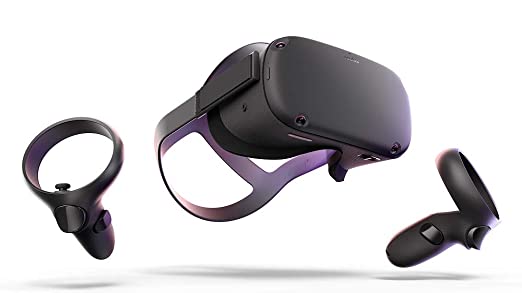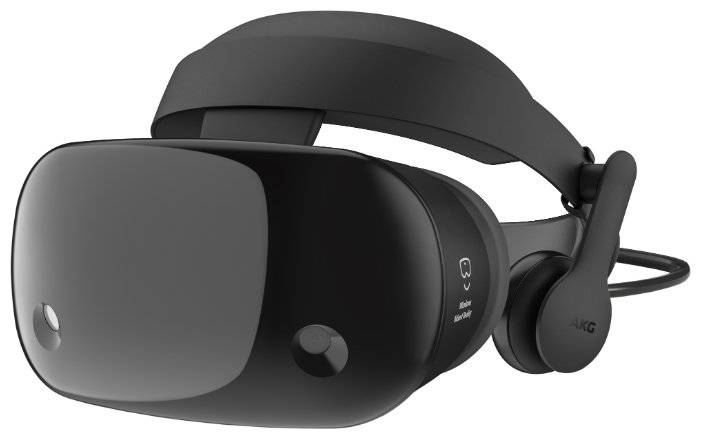Oculus Quest vs Samsung Odyssey
When you compare the Oculus Quest to the Samsung Odyssey you can see which VR Headset is better. Let's take a look of the comparison, and see which model of VR Headset out ontop.
What VR Headset is better?
Comparing the two virtual reality headsets, Oculus Quest and Samsung Odyssey, is a difficult task. Both offer high-quality graphics, tracking and room scale experiences that make for truly immersive gaming experiences. When deciding between them, however, it's important to consider the specifications of each headset in order to determine which one best suits your needs.
The Oculus Quest offers a 95° field of view with a resolution of 1600 x 1440 px. This is complemented by a 72 Hz refresh rate and standalone VR capabilities, allowing you to immerse yourself into your favorite games without needing any other hardware or software. It also features 360 tracking and room scale technology that helps you move around naturally within virtual environments without feeling limited or restricted by cables or other physical boundaries. The main advantage of this headset is its portability as well as its low price point compared to some of the more expensive PC based headsets on the market.
The Samsung Odyssey on the other hand offers a 110° field of view with 1440 x 1600 px resolution; making it suitable for more intense visuals at higher framerates than that of the Oculus Quest’s . It requires either an Intel Core i5 processor or Nvidia GTX 1050 graphics card in order to operate properly so users need to keep this in mind when choosing between these two products. Despite requiring additional hardware components for operation, this headset still provides an incredibly immersive experience due to its 360 tracking and room scale technology combined with its 90 Hz refresh rate—which is significantly faster than what’s offered by most PC based systems currently on the market.
Overall both headsets have their advantages and disadvantages when compared against one another; however my personal preference leans towards the Samsung Odyssey for reasons beyond just specs alone: mainly due to its superior image quality and faster refresh rates making it better suited for high intensity gaming sessions than what's offered by the Oculus Quest. That being said though, those looking for a more affordable entry into virtual reality should certainly consider the Oculus Quest; especially since it can be used wirelessly with minimal setup required unlike many competitors offering similar functionality at higher prices points.
Specs comparison between the two VR Headsets
| Oculus Quest | Samsung Odyssey | |
|---|---|---|
| Overview | ||
| Brand | Meta | Samsung |
| Model Name | Quest | Odyssey |
| Release Date | 2019 | 2017 |
| Country of Origin | United States | South Korea |
| Category | Standalone VR | PC VR |
| Battery Life | 3 h | 4 h |
| Display | ||
| Field of View | 95° | 110° |
| Resolution | 1600 × 1440 px (per eye) | 1440 × 1600 px (per eye) |
| Refresh Rate | 72 Hz | 90 Hz |
| Display Type | OLED | AMOLED |
| Minimum Requirements | ||
| Min. CPU Required | Intel i5-4590 or AMD Ryzen 5 1500X or greater | Intel Core i5 |
| Min. Graphics Required | Nvidia Titan X GTX 1060 or GTX 1070 or RTX 20 series | Nvidia GTX1050 |
| Min. RAM Required | 8 GB | 8 GB |
| Operating Systems | Microsoft Windows | Microsoft Windows |
| Sizing | ||
| Weight | 571 g | 645 g |
| Dimensions | 190.5 x 104.14 x 114.3 mm | 202 × 132 × 111 mm |
| Features | ||
| Room Scale? | YES | YES |
| 360 Tracking? | YES | YES |
| Positional Tracking? | YES | YES |
| Front Camera? | No | YES |
| Eye Tracking? | No | YES |
| Usable with Glasses? | YES | YES |
| Cooling System | YES | |
| Built in Headphones? | YES | YES |
| Built in Microphone? | YES | YES |
| Flip Visor? | YES | No |
| Voice Command? | YES | YES |
| IPD Adjustment? | YES | YES |
| Lens to Eye Adjustment? | No | YES |
| USB? | YES | YES |
| MicroUSB? | no | YES |
| Display Port? | YES | YES |
| Mini Display Port? | No | No |
| HDMI? | No | YES |
| MicroSD? | No | YES |
| Bluetooth? | YES | YES |
| Wifi? | YES | YES |

